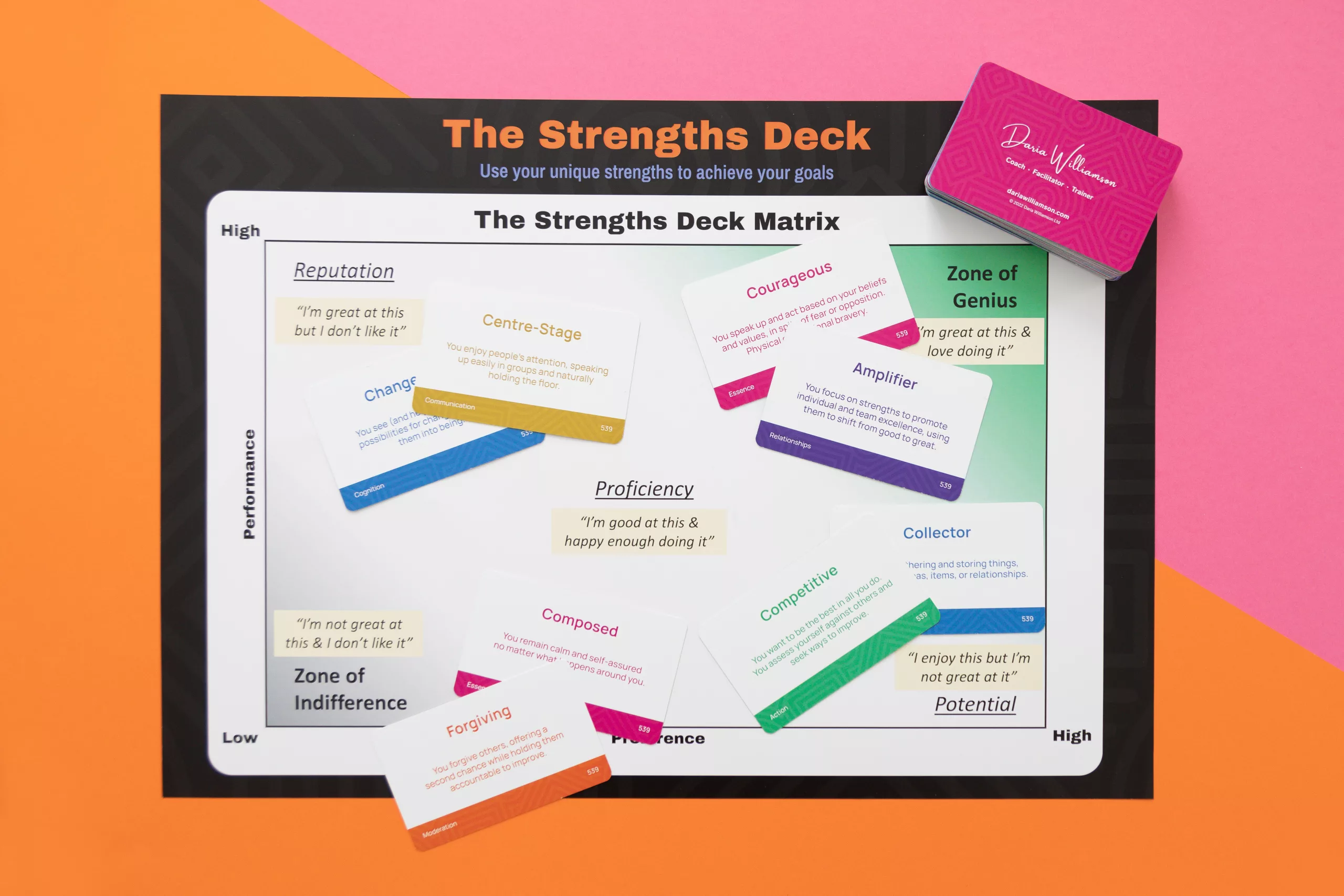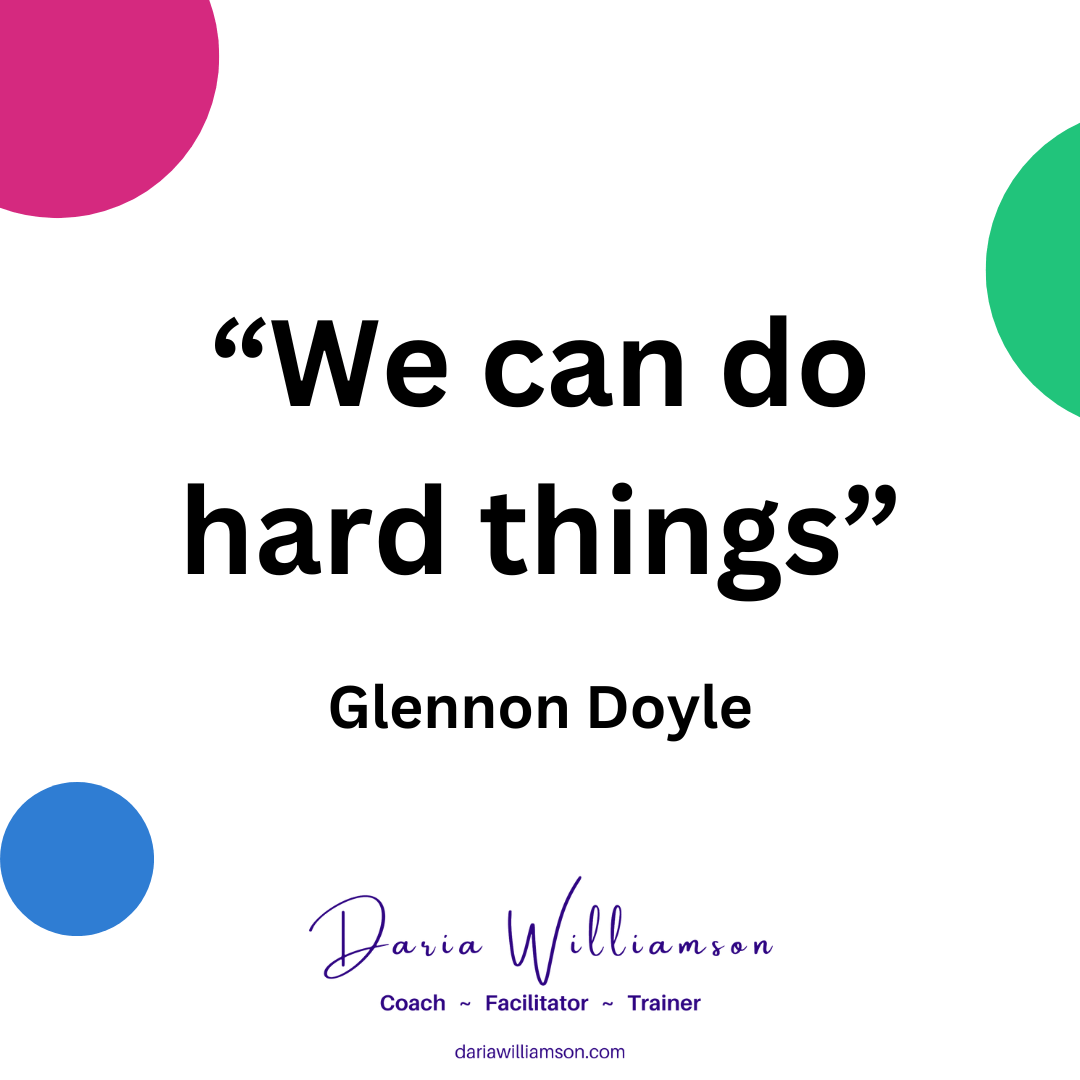As I wrote in a recent article, one of the best ways to boost your energy, engagement and achievement is use your unrealised strengths more often. That’s because they are like hidden treasure – things you are already great at, and that light you up. But the reason they are “unrealised” is because you aren’t using them frequently. (The other kind is realised strengths, things you’re great at, love doing, and use often).
The terms ‘realised’ and ‘unrealised’ strengths comes from Strengths Profile, which uses them to make a distinction between strengths that you use frequently (realised) and infrequently (unrealised). I don’t use these specific terms in The Strengths Deck, but they are a useful concept for understanding the way we use our strengths.
So, why don't you use your unrealised strengths?
There are many reasons that you aren’t using your unrealised strengths very often. And there’s actually nothing wrong with infrequent use of a strength. But when you want or need to increase your energy, engagement, and achievement, your unrealised strengths are your best bet. That’s because you’re already great at them, and using them is enjoyable.
Here are some of the most common reasons I hear from my clients for why they aren’t using their strengths frequently:
- “I don’t have the opportunity to use them in my role at work”
- “I get good enough results from using my other strengths”
- “I didn’t realise that this thing is a strength” (also known as “Doesn’t everyone have this as a strength?”)
- “I don’t know how to use this strength more often”
- “I’m not sure what my boss/colleagues/partner/kids/friends will think”
The great news is that it doesn’t matter why you haven’t been using your unrealised strengths until now – everyone can learn how to use their strengths more strategically. And, the more you use your strengths, the more confident, competent, and energised you’ll feel. Who wouldn’t want more of that?!
Increase how often you use your unrealised strengths
So how do you use a strength that is, by definition, not something you frequently use? I’ve created an easy three-stage process for you to follow:
Stage 1 - identify your unrealised strengths
The first step on the journey to use your unrealised strengths more often is to know what they are.
This is one of the things I love most about what I do – supporting individuals and teams to discover their strengths. I’m an accredited Strengths Profile practitioner, and I also offer a fun and interactive approach called The Strengths Deck. Both tools create space for you to uncover your unrealised strengths.
You can also work it out for yourself – think about what you’re great at and love doing, but you haven’t done much recently. It might even be something from years ago. If you feel a sense of excitement or possibility when you think about picking it up again, you’re on the right track.
Stage 2 - create strategies for using them
Now that you know what they are, it’s time to create strategies for how you will use your unrealised strengths more frequently.
You can do this by pairing them with your existing frequently-used strengths, asking for or creating new opportunities in your work, applying them in your hobbies or community service, or about a million other ways.
Come up with 2-3 ways to use each of your unrealised strengths. They don’t have to be earth-shattering power-moves! What you’re looking for is practical, easy-to-implement approaches that will allow you to flex these strengths in new ways.
Stage 3 - run experiments
This is where “the rubber meets the road”. You’re going to take the strategies you identified at Stage 2, and apply them in the real world.
And you’re going to do this like a scientist. That means:
- Establish your baseline – measure your current levels of energy, engagement, and achievement. This doesn’t need to be fancy – you can rate them out of 10, or assign an emoji from
to
to
.
- Test one strategy at a time – run an experiment with one of your strategies for a few days or a few weeks. If you try to run two experiments at once, how will you know which one made a difference?
- Measure again – using the same measurement scale as Step 1, measure again. You’re looking for changes in your levels of energy, engagement, and achievement.
- Make a decision – if the change from Step 1 to Step 3 was positive, keep that new strategy in play, and choose a new one to test. If the results were negative or neutral, drop the strategy and pick a new one to test. Either way, you’re heading back to Step 2 to run a new experiment.
- Keep going – life is essentially a series of experiments. As your situation changes, so will your realised and unrealised strengths, and your de-energisers, so head back to Stage 1, and run the process again.
The strengths journey never ends
That heading can be interpreted positively or negatively, depending on your mindset!
I see it as totally, completely, 100% positive – it means you’re never done learning, growing, and playing with your strengths.
It means that even if you feel like you’ve hit a dead-end, there are more good things to come, if you’re willing to take a step back and look at your situation, then try new things.
And there are always plenty of alternatives that will allow you to boost your energy, engagement, and achievement, by using your realised and unrealised strengths in new ways and new combinations.

How will you use your unrealised strengths more?
Why not take the opportunity to reflect right now? Grab a pen and paper, and jot down a couple of unrealised strengths you have. Then, make note of a couple of ways you could use them over the next few weeks. Now, make a commitment to yourself to try out each idea – book a slot in your diary, or add it to your to-do list.
Congratulations! You’ve just completed the first two stages of increasing your use of your unrealised strengths! Now comes the fun part – running the experiments.
Would you like support for your strengths experiments?
I offer a complimentary, no-obligation 30-minute discovery call to people who want to discover and grow their strengths.
We’ll talk about where you’re at, what you want to achieve, and the support you need to seize your opportunities and unleash your potential.
Just click on the button to make your booking in less than a minute. I look forward to speaking with you soon.
My primary approach to teaching personal strengths is The Strengths Deck.
I created it to put the power of strengths in your hands. If you want to learn about your unique strengths fingerprint and how to make the most of your amazing strengths, click the logo to find out more, or make a booking for your free, 30-minute call to talk about how we can get your strengths working for you.
I continue to use Strengths Profile for clients who want to do large-scale strengths projects (such as with teams and organisation), and/or who prefer an online assessment and detailed reporting, rather than a hands-on, conversation-based discovery approach..







1 thought on “How To Use Your Unrealised Strengths More Frequently”
Pingback: What Are Your Unrealised Strengths And Why Do They Matter So Much? ~2021 ~ Daria Williamson
Comments are closed.